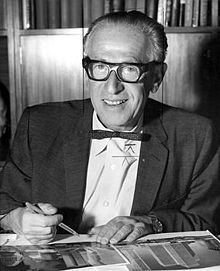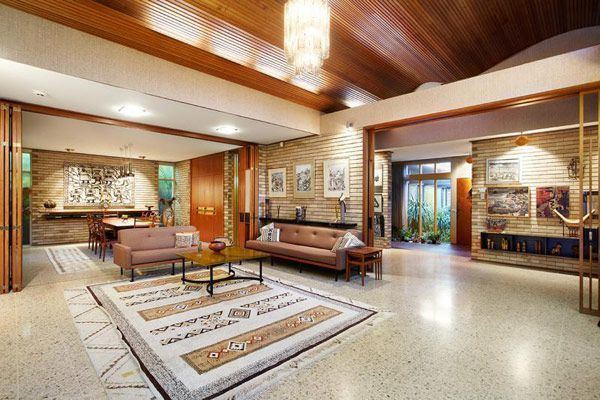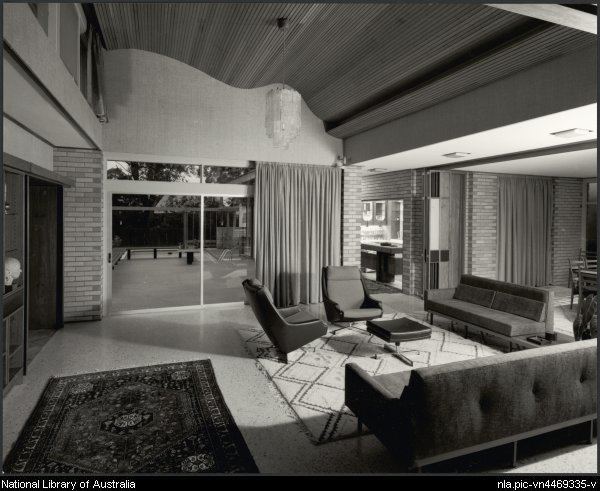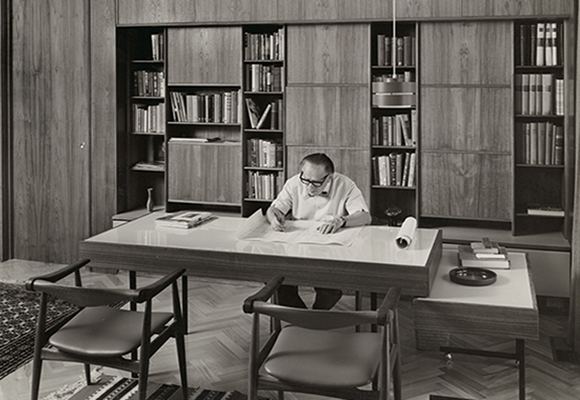Nationality Australian Occupation Architect | Name Ernest Fooks | |
 | ||
Buildings Lansell Road House, Toorak; Shaw House, Toorak Died December 4, 1985, Melbourne, Australia | ||
X-Ray the City! Speculation
Dr Ernest Fooks (born Ernest Leslie Fuchs, 6 October 1906 – 4 December 1985) was an influential European-trained architect who made a significant contribution to architecture, town planning, and design education in Australia and to the cultural life of Melbourne after emigrating to the city during the Second World War.
Contents
- X Ray the City Speculation
- X Ray the City
- Early life
- Key influences and design approach
- Early Houses 194853
- Middle Period 195459
- Later Houses 1960 onwards
- Exhibitions
- Awards
- References

X-Ray the City!
Early life

Fooks was born in Bratislava, Austria-Hungary. His family moved to Vienna in 1908 where he went on to study architecture, completing a doctorate in Technical Science with a major in Town Planning, and opening his own architectural practice in 1932. In April 1939 he and wife Noemi migrated to Australia, taking up residence in Melbourne where Fooks was employed as a town planner by Housing Commission Victoria. in 1944 he was appointed the first lecturer in town planning at the Melbourne Technical College (now the Royal Melbourne Institute of Technology). In 1945 he became an Australian citizen and anglicised his name to Fooks. Three years later he resigned from Housing Commission Victoria and opened his own practice. In August 1948 he was elected Associate of the Royal Institute of British Architects, and was later elected President of the Jewish Society of Arts.
Key influences and design approach

Fooks was a key proponent of the International Modern Movement in Australian architecture. Like his contemporary Robin Boyd, Fooks had relatively few opportunities to design major buildings and is best known for his numerous residential projects. From 1950, his firm designed over forty apartment blocks in and around the Eastern suburbs of Melbourne. By the mid 1950s, his practice expanded to take on commercial projects including La Ronde jewellery shop in Collins Street, Melbourne CBD, Capri Espresso Bar in Footscray and the Public Trustees Building in Exhibition St.
Early Houses, 1948–53

Fooks created houses of architectural significance with individual, and highly creative designs which combined analytical planning with aspects of Scandinavian and European modern design and incorporated principles of traditional Japanese architecture. Fooks' residential architecture underwent three distinct phases, the first of which expressed post-war austerity through conventional forms and finishes. There was a common and straightforward vocabulary in Fooks' early houses which included plain face cream or yellow brickwork, basic hipped or gabled terracotta roofs and simple double-fronted facades. Though these early designs were simple in form, Fooks' was beginning to introduce sophisticated modernist ideas and features. His Sternberg House in Kew (1948) was designed on the "principles of solar control" and incorporated almost full height windows, glazed doors and generous paved terrace areas.
Middle Period, 1954–59

Fooks' middle period exhibited an International Modern style, characterised by low-pitched, flat and butterfly roofs, and bold massings of box-like forms that projected and receded to create striking spaces of solids and voids in finishes of brick and feature stonework. His Appel House in Caulfield North (1955) was a two-storey flat-roofed house with generous windows, and cream brick walls relieved by a broad stone-clad chimney and simple but elegant metal balustrades to the first floor balcony and roof terrace above.
Later Houses, 1960 onwards
Finally, Fooks' Mature, Minimalist style was characterised by efficient structural forms, a reduced palette of materials, generous amounts of glass and elegantly simple details. His domestic projects involved complex and carefully detailed multi-layered open-plan living and thoughtfully constructed surrounding landscapes. His Lansell Rd House (1963) is of aesthetic significance for its high level of craftsmanship in joinery and finishes in folding and sliding screens and built-in teak furniture and cabinetry.

Fooks saw apartment living as a necessity in successful urban planning. In his book Xray the City he showcased his ideas and voiced his concerns regarding construction and environments in post-war Melbourne. He published his book The Density Diagram, Basis for Urban Planning in 1946, with a foreword by H.C. Coombs, the Director-General for the Ministry of Post-War Reconstruction. He was the first to discuss the issue of increasing urban density, well ahead of government legislation acknowledging the same issue more than half a century later. Fooks noted that density alone was not responsible for poor urban living conditions, but that the quality of urban living was related to socio-economic factors, community life and access to quality housing and open spaces for leisure.
Fooks died on 4 December 1985 aged 79. The annual Ernest Fooks Memorial Award was established in his honour by the University of Melbourne for excellence in architectural design. A retrospective exhibition titled "In Quest & Praise of Indigenous Architecture" was held at the Caulfield Arts Complex in 1989.
Exhibitions
Awards
The Adam's House, voted Family Home of the year by Australian House and Garden magazine in 1966.
